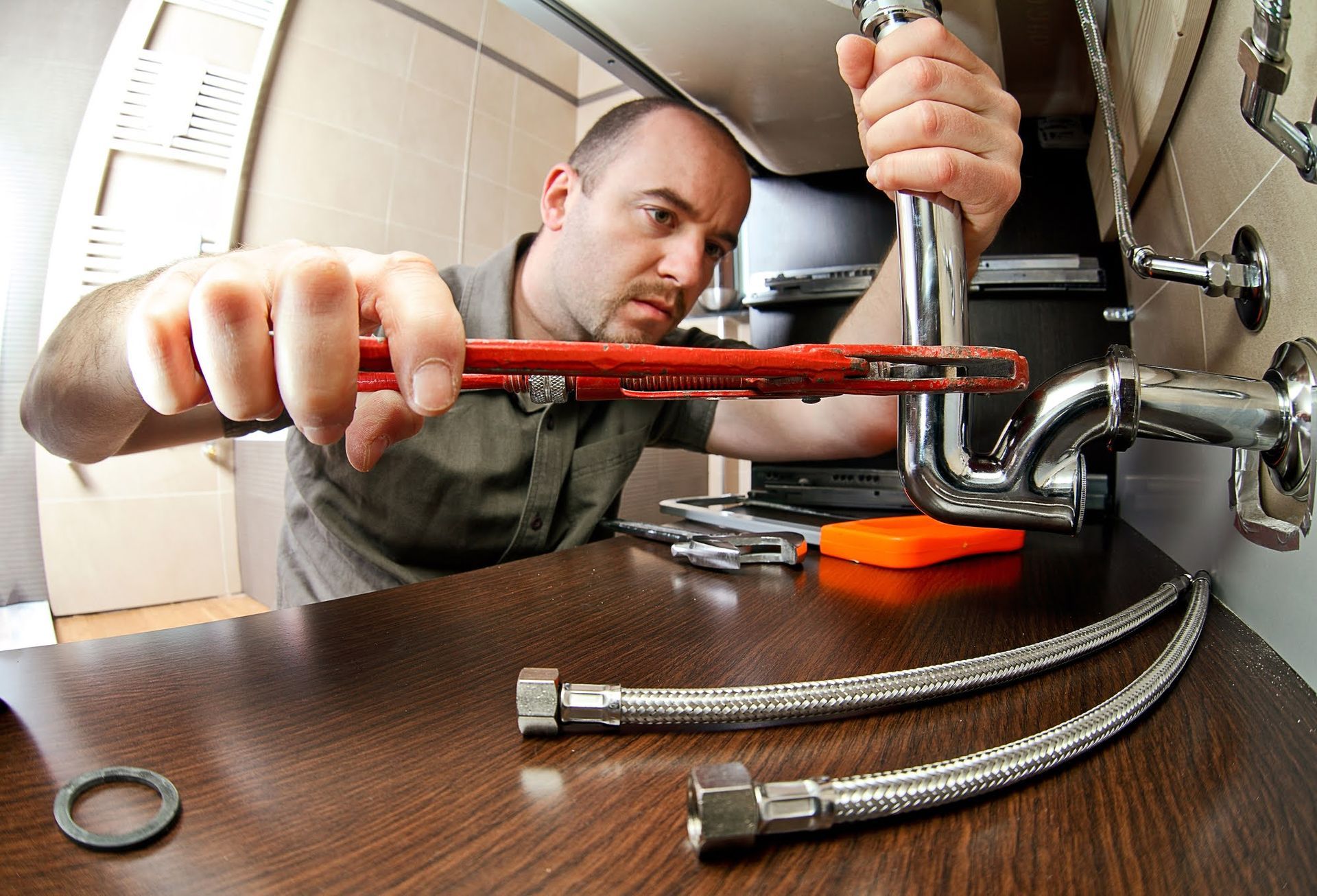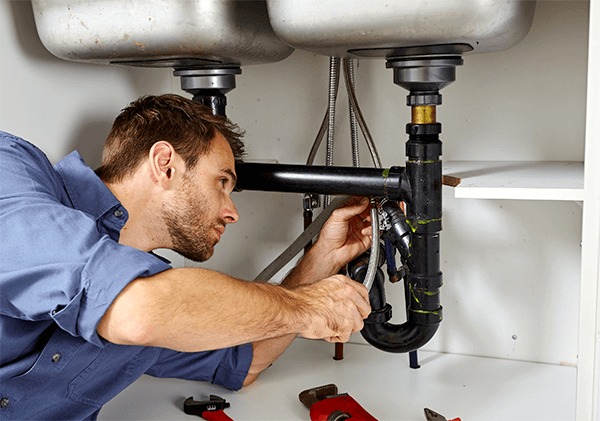On this page on the next paragraphs you can get a good deal of sensible answers in relation to Main Plumbing Issues Found in Old Houses.

Older homes frequently come with beauty, character, and history, however they can likewise bring a host of plumbing concerns. Whether you're taking care of aging pipelines, low water pressure, or leaks, knowing just how to deal with these usual issues is essential to keeping a risk-free and functional home. In this overview, we'll explore the normal plumbing obstacles faced by older homes and supply useful remedies to keep your pipes in top form.
Comprehending Usual Plumbing Concerns
Aging Pipes
Among one of the most typical concerns in older homes is aging pipes. Depending on the age in which your home was constructed, the pipes could be made from materials that have degraded over time, such as galvanized steel, cast iron, and even lead. These products can rust, come to be brittle, or establish leakages, leading to water damage and possible health hazards.
Water High Quality Screening
Older pipes can impact the high quality of your water. Conduct a water top quality test to check for impurities such as lead, rust, or other pollutants that might be presented by aging pipes.
Solutions for Typical Pipes Issues
Replacing Aging Pipes
If your home has old, degrading pipelines, consider replacing them with contemporary products like copper or PEX. This can be a substantial investment, however it will prevent future issues and improve the security and dependability of your plumbing system.
Taking Care Of Low Tide Stress
To repair low tide stress, begin by cleaning or changing old components and getting rid of mineral accumulation in the pipelines. If the issue persists, it may be required to replace sections of corroded pipes.
Repairing and Changing Leaking Pipes
For little leaks, you can utilize pipe clamps or epoxy putty as a momentary solution. However, it's best to replace leaking pipes entirely to stay clear of more damage.
Upgrading Fixtures
Updating old components to modern-day, water-efficient versions can boost your home's pipes efficiency and reduce water consumption. Look for components with the WaterSense tag for the very best effectiveness.
Dealing with Pipeline Corrosion
If your pipes are rusted, changing them with corrosion-resistant materials like copper, PVC, or PEX is the most effective solution. Routine assessments and water high quality maintenance can help prevent better corrosion.
Low Water Stress
If you're experiencing low tide pressure, maybe as a result of natural resources, rust inside the pipelines, or old fixtures that are no longer operating effectively. This can be a major inconvenience, specifically in locations like showers and sinks.
Dripping Pipes
Leakages are one more regular issue in older homes, usually brought on by rusty or worn-out pipelines. Also small leakages can result in significant water damage, mold and mildew growth, and increased water costs if not resolved immediately.
Outdated Fixtures
Obsolete plumbing components such as faucets, commodes, and showerheads not only look old but might likewise be much less reliable, prone to leakages, or incompatible with modern-day pipes requirements.
Pipe Rust
Corrosion is an usual problem in older pipelines, specifically those made from galvanized steel or cast iron. Rusty pipes can limit water circulation, trigger staining, and eventually result in leakages or pipe bursts.
Assessing the Condition of Your Pipes
Examining Visible Pipes
Beginning by examining any kind of visible pipes in your house, such as those in basements, crawl spaces, or under sinks. Seek indications of deterioration, leaks, or rust, which can show underlying issues.
Checking for Leakages
Check for leaks by evaluating areas around faucets, commodes, and under sinks. You can additionally monitor your water meter prior to and after a period of no water utilize to identify hidden leaks.
When to Call a Specialist
While some pipes issues can be taken care of with do it yourself services, there are times when it's finest to call a professional. If you're taking care of significant leaks, substantial deterioration, or are unsure about the condition of your pipes, an accredited plumber can supply experienced assessment and repair work.
Preventive Maintenance Tips
Routine Assessments
Regularly inspect your pipes system for indications of damage. Capturing concerns early can protect against costly repairs down the line.
Water Stress Guideline
Guarantee your water stress is within the suggested variety to stay clear of emphasizing your pipelines and components. A plumber can install a pressure regulator if required.
Water Top Quality Upkeep
Mount water filters or softeners if your water top quality is poor. This can shield your pipelines and components from damages triggered by difficult water or pollutants.
Positive Pipe Replacement
If your home has older pipelines, take into consideration positive replacement prior to significant concerns arise. This can save you from emergency repairs and water damages.
Verdict
Dealing with pipes problems in older homes requires a mix of alertness, preventive upkeep, and prompt upgrades. By comprehending the typical obstacles and recognizing when to seek professional help, you can guarantee your pipes system stays functional and trustworthy for several years to find.
9 Common Plumbing Problems in Old Houses
Living in old houses is all about basking in the character of something unique to its time and devoid of the monotony of modern house design. They re appealing for many reasons, namely their appearance, the superiority of materials used in construction, and they re cheap.
The likelihood, however, of something going horribly wrong with the innards of a home built a while ago is much higher than something built in the last 20 or fewer years. Often, you re going to end up paying up for repairs on an old house.
It could be doors and windows not shutting all the way, problems with your roofing, or a shoddy furnace. It could be a lot of things, but one of the more common problems in older homes is with the plumbing.
In this post, we re going to talk about the most common plumbing issues in older homes and how to avoid them. It s time to make yourself aware of these potential issues before it s too late. Let s get started.
Outdated Fixtures
It is true that older fixtures are often made of more solid and overall better materials than their modern counterparts. However, they ll eventually erode with time and inevitably start causing problems.
Handles break, washers and valves deteriorate, causing leaks and nasty smells. If you ve got all original valves, spigots, faucets, and handles in your home, you may way to consider getting them replaced before anything bad happens.
Bad Repairs Over the Years
Unfortunately, your plumbing goes as far as the plumbers that have worked on your home in the past. You re at the mercy of whatever repairs have been done, good or bad. The older your home, the more likely it is that it s had large scale plumbing repairs.
With something particularly old, your house will have had multiple repairs by multiple plumbers and it s impossible to know the amount of care your pipes got. It s probably a good idea to have a good, experienced plumber come in when you buy an old house to diagnose any poor repairs that may have occurred.
Sewer Lines
This isn t really a problem with your old house, but cracked and broken sewer lines could be at the root of your plumbing issues.
Sewer lines are supposed to take away the black and grey water from your drains into the sewer main, and on to the municipal treatment plant. Because sewer lines are always wet, they tend to attract tree roots, which can crack and clog the sewer line.
Shifting Pipes
Pipe bellies can become an issue, especially in old houses. Pipes buried underneath your house or encased in concrete slabs are at the mercy of an old home s gradual movement over the years. It sounds scary, but it happens.
If the pipes happen to shift downwards, they create a belly , which is a negative slope that can restrict the flow of water or create pools that can end up accumulating waste. This can cause clogs and stoppages if left for too long.
Galvanized Piping
If you notice issues with your water pressure, quality, or notice any discoloration, it could be a result of corroding pipes or a release of iron through the pipes. Galvanized pipes are made of iron and then covered with zinc, which can erode over long periods of time.
Lead Service Lines
If your city uses lead service lines and you have galvanized piping, you might run into problems. A service line brings the water from the water main to your home, but if they re being repaired, an influx of lead could appear in your water.
To avoid any water contamination, you should have a plumber examine your pipes and water to determine if there s too much lead. You may have to install a water filtration system in old houses.
Polybutylene Piping
Polybutylene piping was an affordable type of piping used from the 70s until the 90s but isn t accepted by US building codes anymore. It reacts poorly with the oxidants in water and breaks down slowly over time, which has led to entire system failures in some homes.
If you move into a home built during this time, it s a good idea to have a plumber come in and check to see if these pipes are still installed. You may have to get your entire system replaced, if so. It s better to do this now than to potentially cause large scale damage to your home and need your pipes replaced anyways.
Drain Issues
30 plus years of scum, soap, and dirty water will take its toll on your home s drains. Your toilet, as well as your kitchen and bathroom drains, are susceptible to clogging. When you buy an old home, you won t know what s been washed down the drains before you.
If you notice any water backups in any of your sinks, a backed-up toilet, or any strange smells coming from anywhere, then you should get a plumber in to check your drains. Odds are, there s a build-up of debris that will need to be cleared in most old houses.
Better To Be Safe Than Sorry
When you move into an older home that you suspect might have some issues, it s probably a good idea to get a quality plumber in to inspect your pipes, drains, and fixtures. Getting a clean bill of health will give you peace of mind and small fixes now will save you money by avoiding any emergencies down the road.
https://johntheplumberkansascity.com/9-common-plumbing-problems-in-old-houses/

I was made aware of that report about Plumbing Problems In Old Homes from an associate on a different web property. Are you aware of anybody else who is occupied with the subject? Be sure promote it. Many thanks for being here. Kindly check our blog back soon.
Information